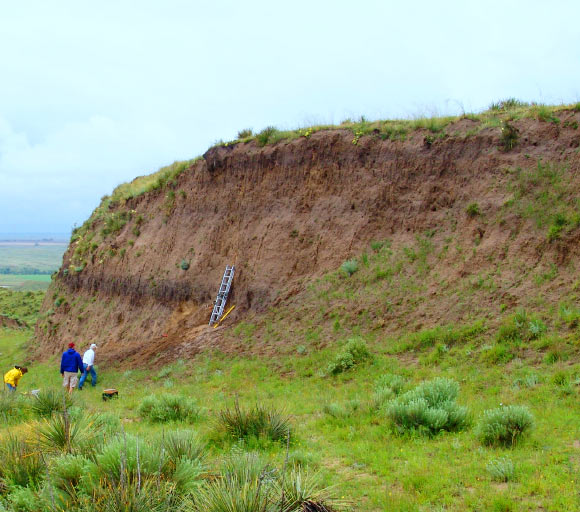At http://cosmictusk.com/big-burn-north-american-great-plains-underlain-by-… … George Howard provides the full paper to read (published in Nature Geoscience on May 25th, 2014. It is five pages long and derives from the University of Wisconsin. Basically, it is telling us the transition from the Pleistocene to the Holocene is characterised by contintental wide wild fires. See the image above – the Brady layer in the Midwest. The event involved landscape disturbance caused by abrupt climate change, fire and the loss of vegetation cover, deep carbon sequestration as the soil was quickly buried under accumulating loess.
is characterised by contintental wide wild fires. See the image above – the Brady layer in the Midwest. The event involved landscape disturbance caused by abrupt climate change, fire and the loss of vegetation cover, deep carbon sequestration as the soil was quickly buried under accumulating loess.
The authors do not visualise a catastrophic deposition of loess – but why would they as the consensus is that loess is formed by wind blowing across the ice sheets and tundra zones. However, the implication is clear – a catastrophic deposit of loess (which means loess deposits elsewhere may have been laid down much more quickly than currently envisaged). We are talking about something that happened just 12,000 years ago – and even if the loess was laid down throughout the following Younger Dryas period that is still a lot shorter timescale than uniformitarianism would normally allow. What if loess is formed by water rather than wind – it could then have been laid down almost instantly, burying the evidence for wild fires (only to be discovered in the modern day). Thus, we have a good catastrophic bit of geology – which will continue to be interpreted in a uniformitarian manner.
